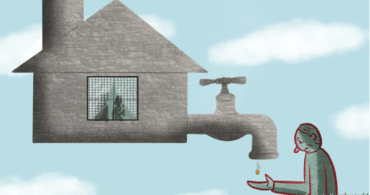An At-a-Glance Guide to Fair Wear and Tear for Landlords
Often misunderstood, fair wear and tear has long been an area of confusion both for landlords and tenants. The line between wear and tear and damage or neglect can be a fine one, but a lot rests on getting it right, because decisions made about charging for damage at the end of a tenancy depend upon it. This at-a-glance guide is designed to help you, as a landlord, understand precisely what fair wear and tear is, how it differs from damage and neglect, and how to minimise it during a tenancy.

Often misunderstood, fair wear and tear has long been an area of confusion both for landlords and tenants. The line between wear and tear and damage or neglect can be a fine one, but a lot rests on getting it right, because decisions made about charging for damage at the end of a tenancy depend upon it. This at-a-glance guide is designed to help you, as a landlord, understand precisely what fair wear and tear is, how it differs from damage and neglect, and how to prevent too much wear and tear during the course of a tenancy.
What is fair wear and tear?
Generally, fair wear and tear is something of a grey area. It can vary from one tenancy and property to the next. There are however some guiding rules that will help define the differences between wear and tear which occurs naturally over time, and damage or neglect that has been caused by a tenant.
Wear and tear is the degradation, over time, of the fixtures, fittings and furniture within a property. It is affected by a number of factors:
- Tenancy length – the longer the duration of the tenancy, the higher the degree of wear and tear will occur
- Number of tenants – the more tenants, the more wear and tear is likely to be apparent
- Age and type of tenants – a professional couple versus a family with pets and children will clearly have an impact on the degree of wear and tear a rental property sees over the course of the tenancy
- Quality of the property and its fixtures and fittings – higher quality finishes and fixtures and fittings will tend to take more flack than those of lower quality
General wear and tear is different to damage and negligence. Here’s a useful comparison guide:
| Fair wear and tear | Damage or negligence |
| Small marks, frays or stains on carpets | Large holes or burn marks on carpets |
| Small scuffs or marks on walls or hard flooring | Holes in walls or significant marks where furniture has been rubbing over time; large scratches on hard flooring |
| Loose handles or hinges on doors or windows | Broken locks or handles, or missing handles |
| Faded or cracked paint | Tobacco stained paint, paintwork that has been drawn on by children |
| Minor tears or frays on furniture | Pet damage to furniture |
| Faded curtains or upholstery | Torn curtains or upholstery |
| Dirty windows | Broken windows |
| Loose or tight taps | Broken taps |
Basically, if something needs a repair or replacement, professional cleaning or specialist attention, it is more than likely going to be considered damage rather than wear and tear. Wear and tear can be expected as part of everyday use, whereas damage or neglect is an unpredicted occurrence.
It is not possible for a landlord to claim against a tenant’s deposit for anything that can be classed as fair wear and tear, and no tenancy deposit scheme adjudicator will entertain it.
How to minimise fair wear and tear?
Based on the fact that it is not possible to make deductions from a tenant’s deposit to cover the costs of fair wear and tear incurred during the course of a tenancy, it is good practice for landlords to take steps to minimise the degree to which their properties deteriorate over time.
Taking on long term tenants will help the cause. Tenants who rent for longer periods are more likely to treat the property as their own and take care over it, so reducing the degree of wear and tear.
Being a good landlord will also prove beneficial. A positive landlord-tenant relationship will usually see the tenant take greater care over the property.
Investing in higher quality fixtures, fittings, furniture and finish will naturally give the property more resilience against wear and tear. But more than that, tenants will be more likely to take care of a higher quality property.
Fitting out and furnishing your property in line with the type of tenants you are renting to is another good way to help minimise wear and tear. If you are renting to a family with children, it is worthwhile upgrading to a higher level of durability. And if you are letting to tenants with pets, you may wish to consider going unfurnished, or including an additional clause in your tenancy agreement to allow for the additional wear that is often associated with pets.
Finally, carrying out regular property inspections and investing in a professional inventory rather than a DIY alternative will help you keep on top of how your property is fairing in terms of wear and tear.
As a side note, it is essential that, as a landlord, you factor in the costs of redecorating and replacing items at the end of their lifespan when you are calculating your rental yield.
Done-for-you property management, with an added bonus…
As a landlord, you have enough on your plate without having to make tricky decisions over fair wear and tear and tenant damage. So why not hand over to a property management service, but one with a distinct advantage?
The homes2let guaranteed rent scheme guarantees rental payments, even when the property is untenanted, as well as taking all the hassle of property management off your shoulders too. Including dealing with fair wear and tear and tenant damage issues.
Interested to learn more? You are welcome to get in touch with our expert team to discover how we can make your life as a landlord less of a burden.
Related Insights

What are the Repair and Maintenance Obligations of a Landlord?
In the private rented sector, landlords are generally expected to keep any property let to tenants well-maintained and in a good state of home repair. By the same token, tenants must ensure they act in a ‘tenant-like manner’, not causing damage to the property other than anything that can be classed as ‘fair wear and tear’.

The Shift in the UK Buy-to-Let Market: Navigating Landlords’ Sales Surge and Rising Rents
The UK real estate landscape is witnessing a significant transformation, particularly evident in the buy-to-let sector. The recent trend of landlords divesting their properties is reshaping the rental market across Great Britain, with a notable impact in Scotland. This article delves into the multifaceted reasons behind this shift, the consequent effects on the housing market, and the future outlook for investors and tenants alike.

Labour’s New Rental Reforms: A Seismic Shift And Five Solutions for UK Landlords
Labour's rental reforms are bringing major changes to the UK's private rental sector, aiming to enhance tenant rights but also creating challenges for landlords. These challenges include the end of no-fault evictions, indefinite tenancies, and rent increase restrictions, leading to uncertainty and potential financial implications for landlords. However, guaranteed rent agencies offer a solution by handling property management and providing a guaranteed rental income, ensuring compliance with new regulations and offering peace of mind to landlords in this changing landscape.






